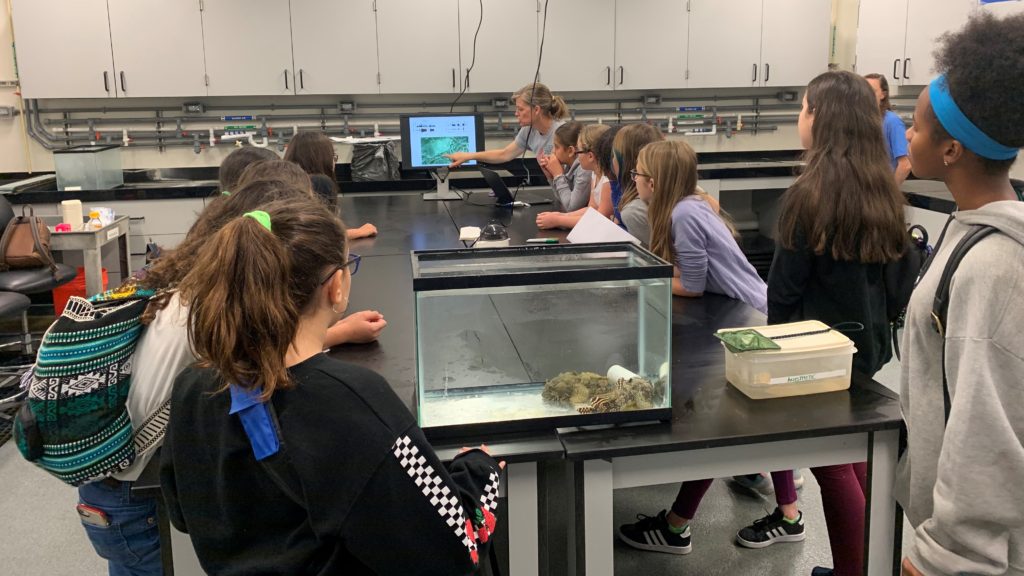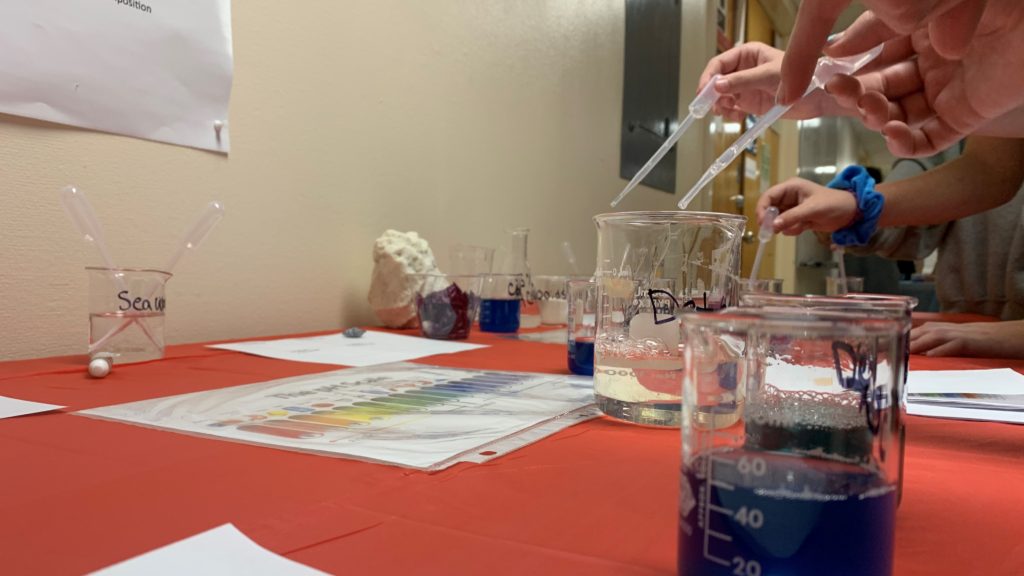Rosenstiel School Event Aims to Encourage Schoolgirls into Marine Science Careers
Briana GibbsNovember 21, 2019

The girls learned about toadfish physiology from Dr. Danielle McDonald (Key News/Briana Gibbs)
Early Saturday morning approximately 50 6th- and 7th-grade girls from around Miami-Dade County filed into a seminar room at the University of Miami Rosenstiel School of Marine and Atmospheric Science. In its 15th year, the Rosenstiel School event collaborates with the American Association of University Women and Miami-Dade County Public Schools to allow young women to explore careers in marine science.
The full-day program gave aspiring young scientists a chance to learn about the different types of research currently underway at the Rosenstiel School. Girls could interact with faculty and graduate students as well as participate in experiments throughout the day.
Why only women in science?
According to the National Science Foundation’s statistics department, in 2016 women earned about half of all science and engineering bachelor’s degrees, 44 percent of masters and 41 percent of doctorates.
When asked why she started the program Dr. Rana Fine, professor of Oceanography at the Rosenstiel School, said, “We have such a fabulous marine and atmospheric science school here, why not share?”
Fine said part of what encouraged her to begin bringing girls into labs where women work was early research suggesting “if you catch them by the 6th or 7th grade, you might actually have them hooked” on science.
Fish biologist and physiologist Dr. Danielle McDonald added, “I think it’s really important to have role models for girls in science so they can see that anything is possible.”

A chemistry experiment designed to teach about pH at the event (Key News/Briana Gibbs)
Some of the areas the girls were exposed to included:
Marine Biology – Probably the most familiar discipline of marine science, the event featured numerous labs studying very different organisms.
First the girls learned about corals with Jane Carrick of the Benthic Ecology Lab. Dr. Nikki Traylor-Knowles taught the girls about anemones and other invertebrates with the Cnidarian Immunity Laboratory. Other girls learned about coral reef restoration with the Coral Reef Futures Lab.
The girls got hands-on participation in the Toadfish Lab with McDonald, where they learned about oil spills and their effects on animals. Dr. Maria Cartolano taught the girls about cortisol, a stress hormone found in animals and how scientists test for these hormones. In this lab, the girls got to extract blood from toadfish and see how blood can be separated from plasma using a centrifuge.
Gaitlyn Malone of the Shark Research Lab taught the girls about the methods of tagging a shark. She showed the girls different shark teeth and explained about the types of prey each shark eats based on tooth shape.
Meteorology – Meteorology falls under the umbrella of atmospheric science at the Rosenstiel School, with a strong focus on math and engineering. Kayla Besong of the Climate Group taught about differences between weather and climate as well as the complex models that help scientists with climate change.
Geology – Amel Saied of the Stable Isotope Lab looked at the effects of changes in ocean chemistry and pH. Young students experienced how acid affects corals and other calcareous animals by dropping solutions onto specimens.
Sara Bashah of the Comparative Sedimentology Laboratory continued the theme that ‘rocks rock,’ teaching the girls about common uses for different types of rocks.
Oceanography – Dr. Renellys Perez from the National Oceanic and Atmospheric Administration’s Physical Oceanography Division focused on density differences. This experiment used dyed warm and cool water for observing which temperature was denser.
Marine Geochemistry – Dr. Hilary Close of the Close Lab taught the budding scientists about how different organic materials have different chemical signatures. Her experiment showed the girls the different colors extracted from vegetables using acetone.
Students left feeling energized and excited about the possibilities of a marine science career, especially those that hailed from a coastal environment like Key Biscayne.


